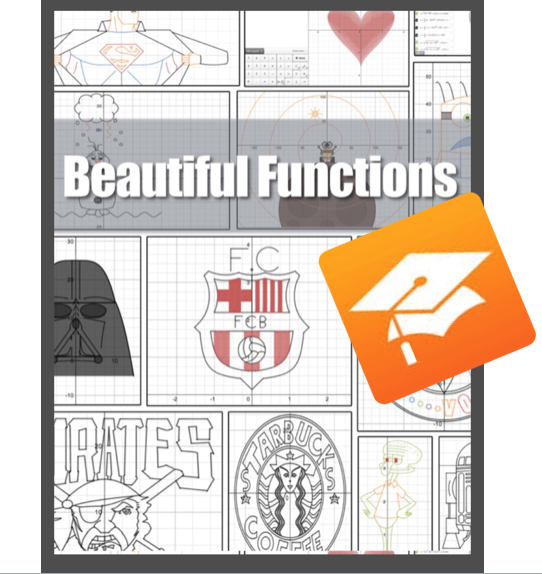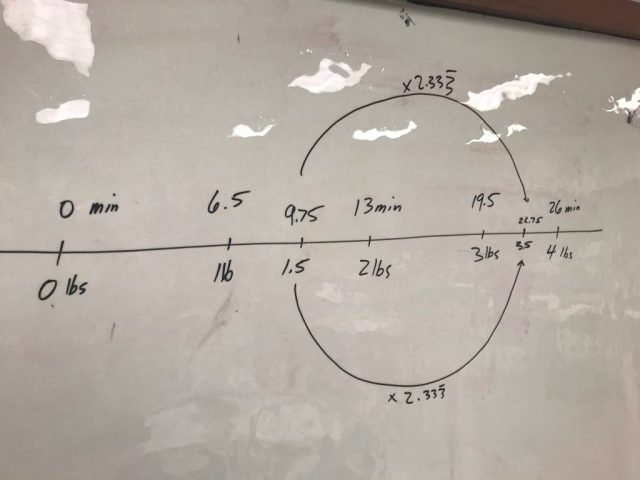
My Favourite Desmos Feature


 As the year closes down I think back on 2017. I was curious about some of the stats on this site and was blown away at some of the numbers. I never thought that when I started sharing what goes on in my classroom that I would have over 150000 views in a single year! Amazing….and thats all because of you! I dug a bit deeper and found the three most popular posts from this year.
As the year closes down I think back on 2017. I was curious about some of the stats on this site and was blown away at some of the numbers. I never thought that when I started sharing what goes on in my classroom that I would have over 150000 views in a single year! Amazing….and thats all because of you! I dug a bit deeper and found the three most popular posts from this year.
At first glance I thought, “Yeah, those top 2 posts make sense. Their kinda gimmicky and fads. We search for those relevant topics our students are into; games and bottle flips! I’m sure if I wrote a post on fidget spinners it would be up there too.”But after thinking back on those activities and comparing them I think both their value come from being able to gain great insight into student thinking. And it’s that ability to assess our students deeper thinking here that teachers are drawn to.
Take the Angry Birds lesson for example, the creativity that is embedded throughout the lesson is everything. Students get to choose how their flight paths look and act. There’s a story behind every arc they put into their activity. Their thinking can’t help but spill out all over, and I get to use that knowledge I gain to help push them along. Take away the angry birds and you still have a great creative lesson.
Replace it with a drawing, or trace of a picture or even a marble run and students experience the exact same creativity and learning goal expectations. The activity still allows me to have those insightful conversations.
The bottle flipping activity is a formative assessment gold mine. Again take away the bottles and replace with paper balls or card tossing and this lesson is identical, and I have just as much success at seeing into my students thinking.
It’s this insight that we all want. It’s this insight we need. Insight allows us to what Kyle Pearce and I have been calling ignite our moves. Seeing how a students thinks in live time allows us to act. We may act to address a misconception. We may act to push learning further. We may act to plan our next lesson. We may act to change our planned lesson into something that the students need at that moment. Lessons that allow insight into student thinking must be our norm.
This fits with the 3rd top resource. Spiralling Grade 9 Math. The file found on this post give us a day-by-day to teach with lessons just like the ones above. Not gimmicky lessons — Lessons that spark curiosity! They are lessons that provide great insight so I can ignite my moves and fuel my students sense making. And fuelling sense making has to be our main purpose.
Have you used any of these resources? Comment below to share how?

Reading this post in your email and can’t see the video above? Click here to the post page.
I said nothing else. I was letting the curiosity build. After it looped and looped students started to work. Without saying a word about it students were trying to find how long it will take to defrost an item that weighed 3.5 pounds.
“Plan with Precision so you can proceed with great flexibility” – Tom Schimmer.




The book 5 Practices for Orchestrating Productive Mathematics Discussions has been an invaluable guide to help me re-design my planning time.

I did not anticipate students using seconds.

I also did not anticipate students using additive thinking with the unit rate.




Reading this post in your email and can’t see the video above? Click here to the post page.

As part of a presentation on assessment in math class I put together a short video explaining some key elements for assessment in my classes. When I was thinking about creating this video a certain young man in my class kept standing out in my mind. This video is really his assessment story. I wanted to share this video here in addition to the presentation. You can watch the video or read the transcript below.
Seeing this post through email and can’t see the video? Click here to go to the post page.
Transcript
Hey everybody! My name is Jon Orr, I’m a high school math teacher at John McGregor secondary school in Chatham Ontario. I want to share a short story with you about assessment in math class.

I’m sure you remember how your math classes were structured… Lessons….homework …. repeat…then tests. And your mark was created by all those test results. I ran my math class like this for about 8 years.

What sparked a change for me was when I read these simple words that are written all over the Ontario curriculum document.”By then end of the course the student will…”

End of the course??? Really? I have until the end of the course to assess our learning goals? But I had been evaluating by the end of the unit or by Sept. 23 the test date! And like every math teacher that evaluation of those skills were stuck to a student for the rest of the year regardless how they improved upon those skills. I wanted my students to learn our course content not just by Sept. 23 but just learn them! I wanted to promote growth.

I needed my assessment and evaluation policies to reflect that! I want to share them with you and to do that I want you to meet Conall!

Conall is in my grade 10 applied math class. Conall also has autism. He functions very well in my active math class. One day Each week along with his classmates Conall logs onto his Freshgrade account and waiting for him there is a list of our current learning goals. Each learning goal shows not only his current progress, but his past achievement on that skill. Conall scans through the learning goals, and chooses one that he wishes to improve upon. Here is where Freshgrade is great, it captures and holds all of his work which provides me great insight into his learning. As Conall works to improve his learning goals he uploads pictures of his work through the app. I get to see that work and provide audio or written feedback also through the web/app or in person. What I love is that I get to see all that interaction for each learning goal (expectation) forever. I can see the growth that Conall is making. I love being able to see Conall’s thinking progress as he attempt problems. It makes me as a teacher more confident about his ability on the course expectations.

For example, Conall uploaded a picture of his work on solving a proportion.
 He was confused on the nature of proportional relationships. After a comment and talking with him he made corrections and re-uploaded. That progression of learning stays in their portfolio for us both to see! His next step is to attempt a new problem to show consistency. And then he moves on to a different learning goal! We do this each week … ALL YEAR LONG!
He was confused on the nature of proportional relationships. After a comment and talking with him he made corrections and re-uploaded. That progression of learning stays in their portfolio for us both to see! His next step is to attempt a new problem to show consistency. And then he moves on to a different learning goal! We do this each week … ALL YEAR LONG!
Time is no longer a factor. Conall doesn’t have to compete with the rest of the class on his learning. He doesn’t get penalized because he couldn’t master the concepts by a specified date. This assessment structure gives more power to Conall while at the same time makes him take more ownership in his own learning. He has choice!He has to assess himself on each goal to know where to improve next.

But that routine isn’t just for conall….its for the entire class. Everyone uses their portfolio to push themselves and show their learning.

“Assessment is power not punishment” * in my class and that helped Conall and many of my students be successful this year.
Thank you
* Quote adapted from “Math is power not punishment” – Dan Meyer